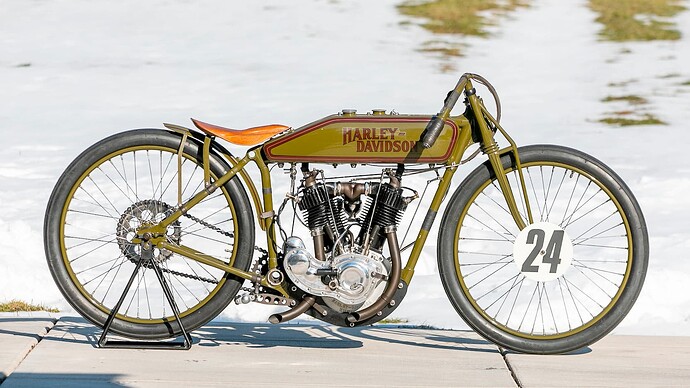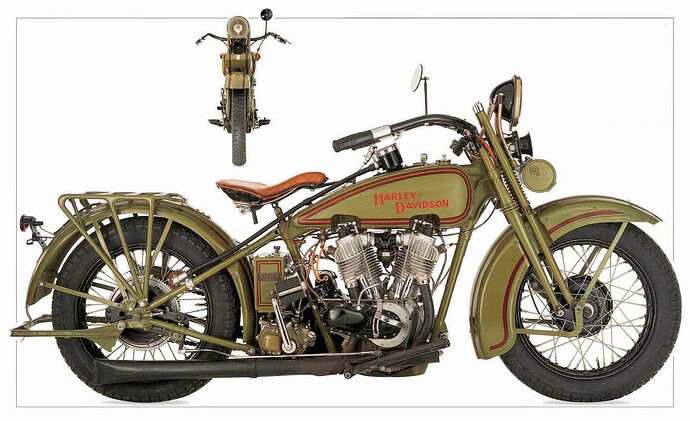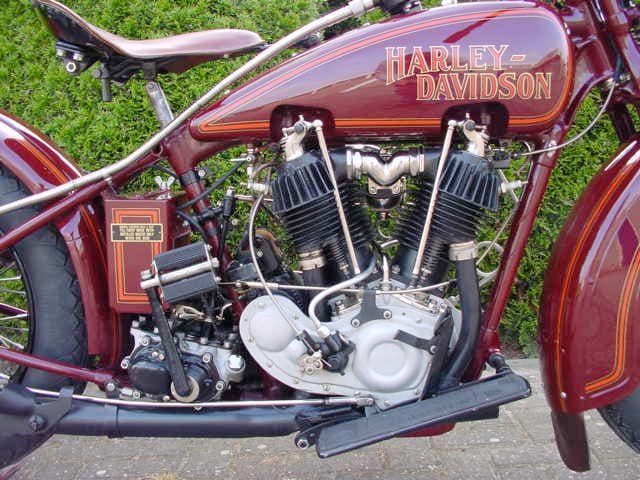Harley Davidson 1928 1217cc Two-Cam
Harley-Davidson announced in 1927 a new motorcycle for 1928 - The Two-Cam Twin. Previously, two-cam motorcycles were available only to racers, hillclimbers, and a few select dealers.
The twin-cam arrangement had first been seen in 1916 on the works-only eight-valve racers and was adopted on the factory’s F-Head racers and hill-climbers after World War I.
1924 FHAC Two Cam
There was a 989cc JD version and a 1217cc JDH model. The timing gear case had a distinctive peanut shape, which made it easily recognisable as a Two-Cam.
H-D JD Two-Cam
The single-lobe cam arrangement of the standard engine limited the possibilities of tuning the engine for high performance and the extra cam made it possible to enhance the power output, that amounted to about 29 hp, some 5 hp more than the standard JDH engine produced.
The new Two-Cams were very fast and differed in a number of respects from standard models: fuels tanks were narrower, front forks were specially forged and there was the option to order a smaller wheel size to create a somewhat lower centre of gravity.
By the end of 1929 production was stopped though due to the changing market conditions. The depression years were coming and the Two-Cam models were expensive machines. A standard JD was priced at $320, a Two-Cam cost $370; only a limited number of machines were sold.
The difference between 1000 and 1200 cc engines can be seen by checking the cooling fins: 1200cc models have eleven fins of the same diameter, while the 1000cc model have its five bottom fins gradually tapering in diameter.






